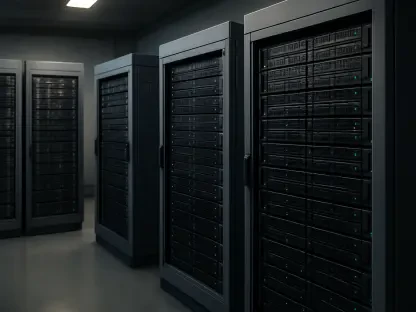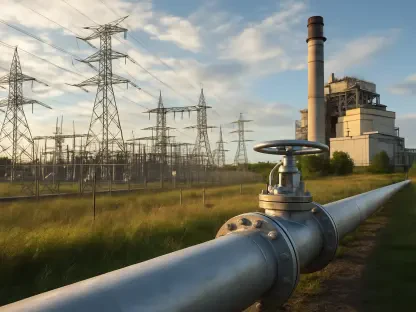In a world increasingly driven by artificial intelligence, the backbone of this technological revolution—data centers—faces a critical hurdle: energy. These sprawling hubs, powering everything from cloud computing to AI algorithms, consume staggering amounts of electricity, often outpacing the grid’s ability to supply it. The Federal Energy Regulatory Commission (FERC), tasked with overseeing the nation’s energy infrastructure, has stepped into the spotlight, recognizing that without swift action, the AI boom could stall, threatening economic progress and national security. This urgent challenge sets the stage for a deeper look into how FERC is tackling the issue head-on, balancing innovation with the needs of everyday consumers.
The significance of this story lies in its far-reaching implications. Data centers are not just tech infrastructure; they are the engines of a digital economy projected to contribute trillions to global GDP in the coming years. FERC’s newfound focus on integrating these facilities into the energy grid reflects a national imperative to stay ahead in the global AI race. Failure to address this energy bottleneck could cede technological leadership to competitors, while success promises to fuel innovation and job creation. This narrative explores how FERC’s leadership is navigating complex energy demands, regulatory hurdles, and public concerns to ensure that the AI revolution doesn’t come at an unsustainable cost.
Why Data Center Connectivity Is a National Priority
Data centers have emerged as a linchpin of modern technology, with their energy consumption skyrocketing as AI applications multiply. A single data center can use as much electricity as a small city, with some estimates suggesting that by 2027, their global power demand could double compared to 2025 levels. This unprecedented strain on the grid has pushed FERC to prioritize their connectivity, viewing it as essential to sustaining economic growth in a digital age.
Beyond economics, the stakes involve national security. Delays in powering these facilities could hinder AI-driven advancements in defense, cybersecurity, and critical infrastructure, leaving the nation vulnerable. FERC’s recognition of this issue as a top-tier concern signals a shift in energy policy, where technology’s needs are no longer a niche topic but a core component of strategic planning.
This urgency is compounded by global competition. As other nations invest heavily in AI infrastructure, the pressure mounts for the United States to keep pace. FERC’s role in ensuring that data centers can access reliable power without overwhelming the grid has become a defining challenge, one that could shape the country’s position on the world stage for decades.
The Critical Link Between AI Expansion and Energy Needs
AI’s rapid growth is reshaping energy consumption patterns in ways few anticipated. Training a single large AI model can emit as much carbon as five cars over their lifetimes, with data centers accounting for roughly 2% of total U.S. electricity usage—a figure projected to climb sharply. This insatiable demand underscores why FERC’s attention to these facilities matters to everyone, from tech giants to small-town residents.
The ripple effects are tangible. As data centers cluster in regions with favorable conditions, local grids often struggle to handle the load, risking outages or higher costs for all consumers. A case in point is Northern Virginia, home to a massive concentration of data centers, where utilities have warned of potential strain on infrastructure if expansion continues unchecked. Such scenarios highlight the broader implications for grid reliability and economic equity.
Moreover, the trend of technology-driven energy use extends beyond AI to cryptocurrency mining and other digital innovations, creating a cumulative burden. FERC’s challenge lies in addressing these overlapping demands while preventing energy costs from spiraling. The agency’s focus on data centers is thus a microcosm of a larger struggle to adapt energy systems to a tech-centric future.
FERC’s Comprehensive Strategy for Data Centers and Energy Challenges
FERC’s approach to data center connectivity is multifaceted, reflecting the complexity of modern energy policy. Under the leadership of Chair Laura Swett and Commissioner David LaCerte, the agency has committed to accelerating grid integration for these facilities to support AI’s growth. This includes streamlining processes to ensure that new centers can plug into the grid without years-long delays, a bottleneck that has frustrated tech companies and policymakers alike.
At the same time, FERC is keenly aware of the financial implications for ratepayers. Concerns about rising electricity bills due to infrastructure investments are front and center, with the agency balancing the need for rapid progress against affordability. This tightrope walk is evident in discussions around who should bear the cost of grid upgrades, a debate that pits innovation against consumer protection.
Broader energy issues also frame FERC’s priorities. A forecasted 26% spike in natural gas prices, coupled with drought impacts on hydroelectric power, adds pressure to an already strained system. Meanwhile, policy initiatives like exploring blanket authorizations for liquefied natural gas and hydroelectric projects demonstrate FERC’s wider reform agenda, aiming to tackle systemic challenges while addressing the specific needs of data centers. These efforts, grounded in hard data and strategic planning, showcase a proactive stance on an evolving energy landscape.
Leadership Perspectives from FERC Commissioners
Insights from FERC’s top officials lend authority to the agency’s direction. Chair Laura Swett has emphasized the dual mission of ensuring reliable electricity and fostering innovation, stating that streamlining regulations is crucial to powering data centers efficiently. Her background as a former FERC staffer informs a pragmatic approach, focusing on cutting bureaucratic delays to attract investment in critical infrastructure.
Commissioner David LaCerte, meanwhile, has framed the issue in stark terms, warning that lagging in the AI data race poses significant national security risks. His call for urgency resonates with industry leaders who fear losing ground to international competitors. LaCerte also underscores the importance of protecting consumers, acknowledging public anxiety over potential cost hikes tied to data center expansion.
Reactions from state utility regulators add another layer to the discourse, with many expressing concern about the localized impact on retail customers. Their apprehension about bearing the financial brunt of grid enhancements highlights a tension that FERC must navigate. Together, these voices paint a picture of an agency under pressure to innovate while maintaining trust and equity across diverse stakeholders.
Practical Solutions for Innovation and Consumer Protection
FERC’s actionable strategies offer a roadmap for balancing technological advancement with public interest. One key initiative involves expediting data center connections by reducing regulatory red tape and improving transparency in permitting processes. This means clearer guidelines and faster approvals, ensuring that critical projects aren’t bogged down by outdated protocols.
To safeguard consumers, frameworks are being developed to mitigate cost burdens. Commissioner LaCerte has been vocal about ratepayer advocacy, pushing for mechanisms that distribute infrastructure expenses fairly. This commitment aims to prevent ordinary households from subsidizing the tech industry’s energy appetite, a concern that has sparked heated debate in energy policy circles.
Modernizing FERC’s operations is another pillar of the strategy. Efforts to close dormant dockets and refine federal environmental reviews under the National Environmental Policy Act are underway, aiming to eliminate inefficiencies. These steps, while technical, are vital for aligning the agency’s processes with the pace of technological change, ensuring that energy policy keeps up with the demands of a digital era.
Looking back, FERC’s determined push to integrate data centers into the grid stood as a pivotal moment in energy policy. The leadership’s focus on balancing AI-driven innovation with affordability reflected a nuanced understanding of the stakes involved. As challenges like rising natural gas prices and environmental constraints persisted, the agency’s proactive measures—streamlining regulations and protecting ratepayers—offered a blueprint for progress. Moving forward, continued collaboration with industry and state regulators remained essential to refine these strategies. The path ahead demanded vigilance to ensure that the benefits of technological growth were shared equitably, setting a precedent for how energy policy could adapt to future disruptions.









